Abstract
By perianal electrical stimulation and EMG recording from the external anal sphincter the anal reflex was constantly present in normal subjects. The latency decreased within certain limits with increasing stimulation to an average minimum latency of 50 ms (SD 10.5). There was no difference between the minimum latency in normal subjects and patients with suprasegmental lesions of the CNS. The latency may be prolonged in patients with lesion of the reflex arc. By stimulation over the posterior tibial nerve behind the medial malleolus a reflex reaction could be picked up constantly from the anal sphincter in normal subjects. This reflex had a longer latency but a lower threshold than the reflex reaction from the tibialis anterior muscle. The average minimum latency from the anal sphincter was 93 ms (SD 21.1) and from the tibialis anterior muscle 64 ms (SD 7.9). In the absence of the anal reflex it may be possible to localise the defect to the afferent or efferent parts of the reflex by using types of stimulation. Preliminary studies of spinal shock revealed a perianally elicited anal reflex in all cases, but also a response to peripheral stimulation in some of the cases, more frequently found in the anal sphincter than in the tibialis anterior muscle.
Full text
PDF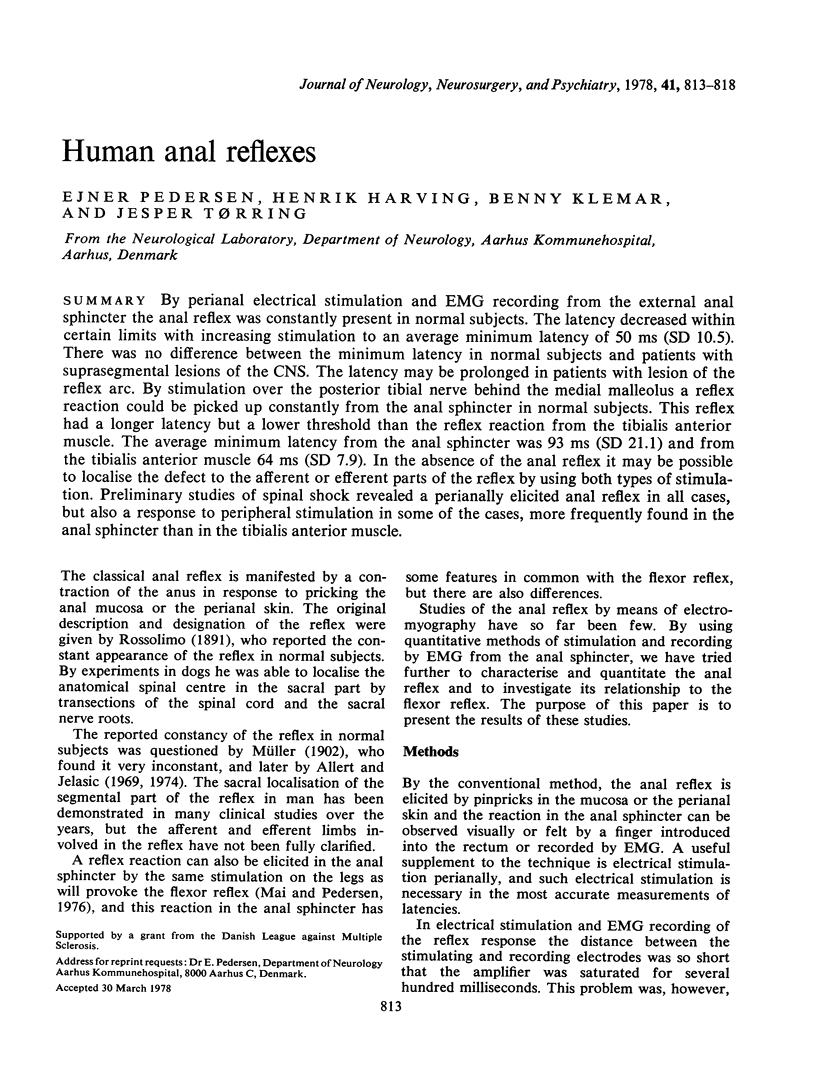
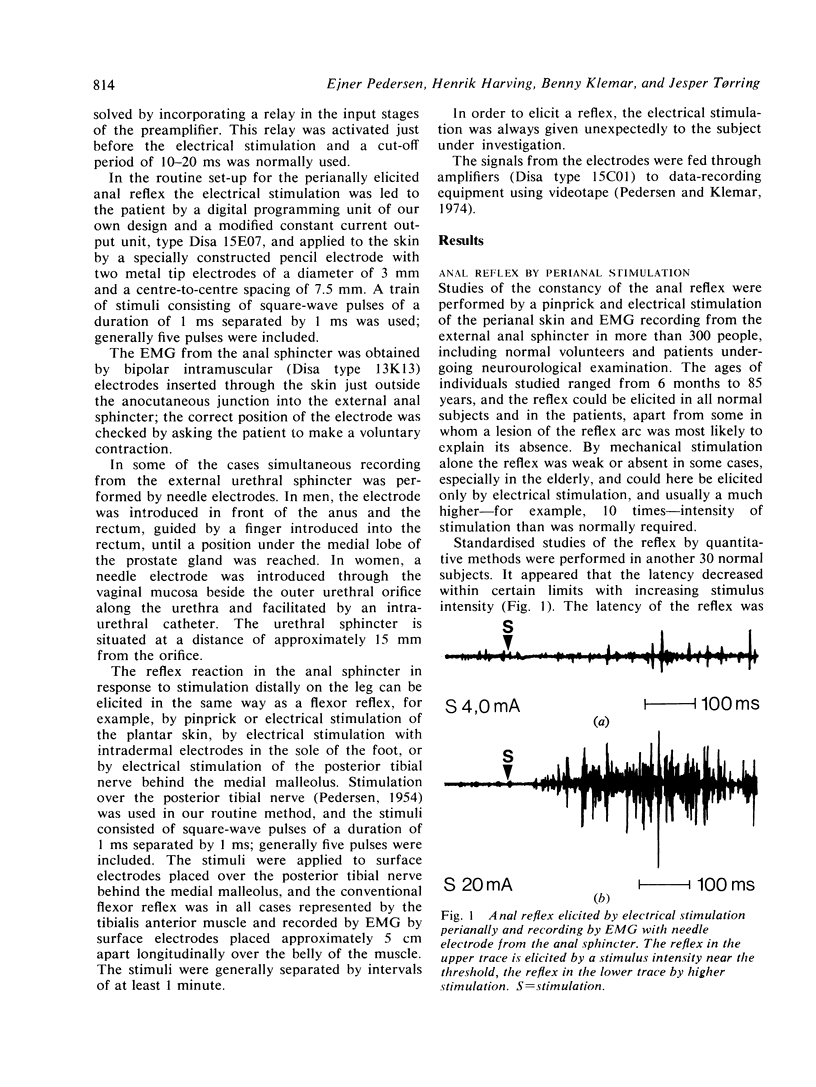
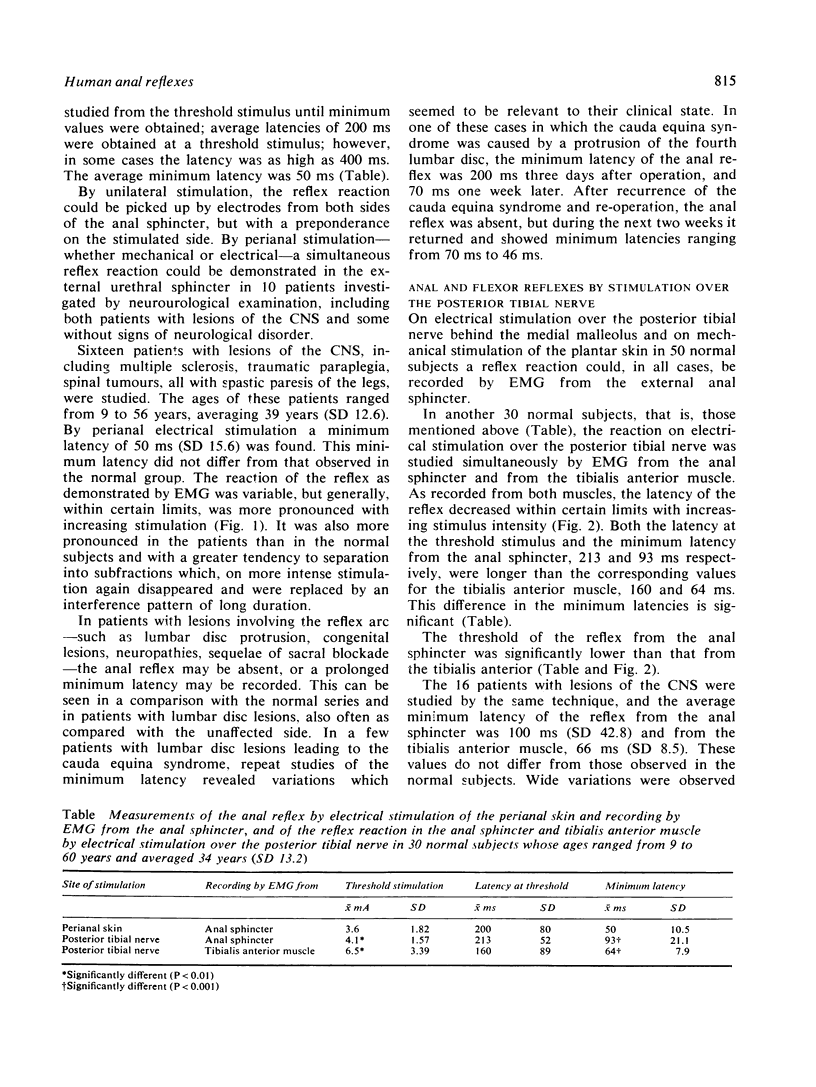
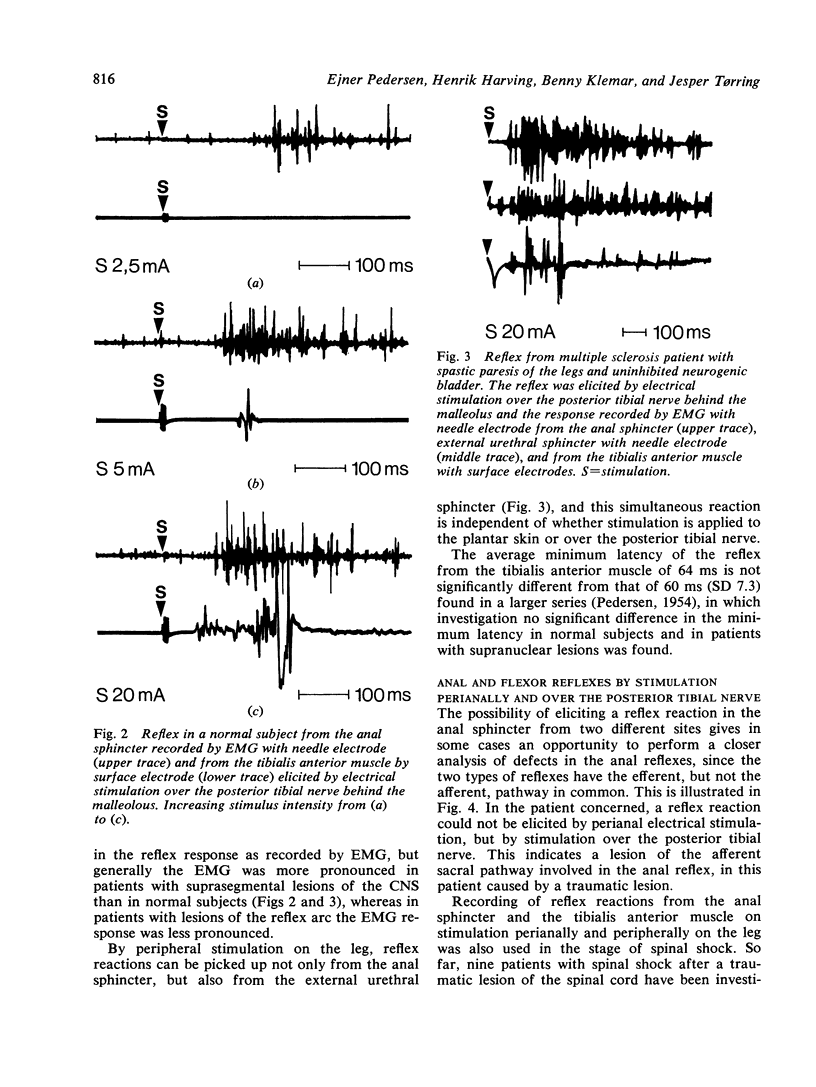
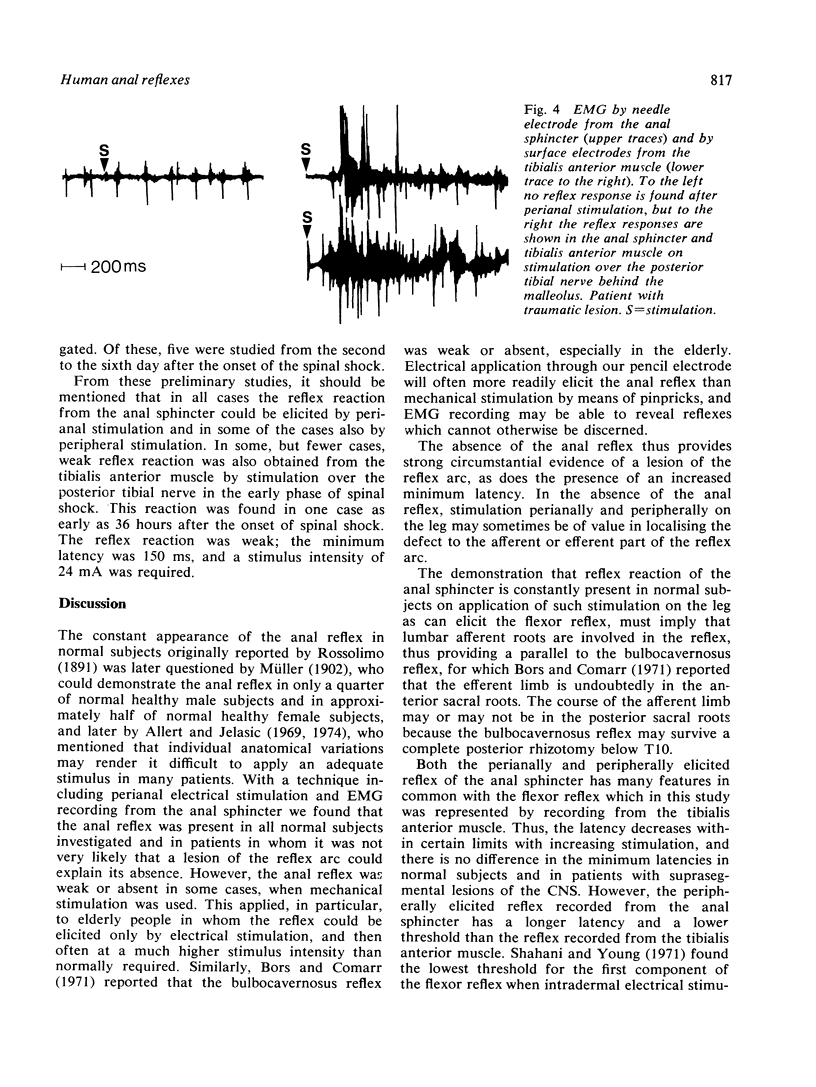
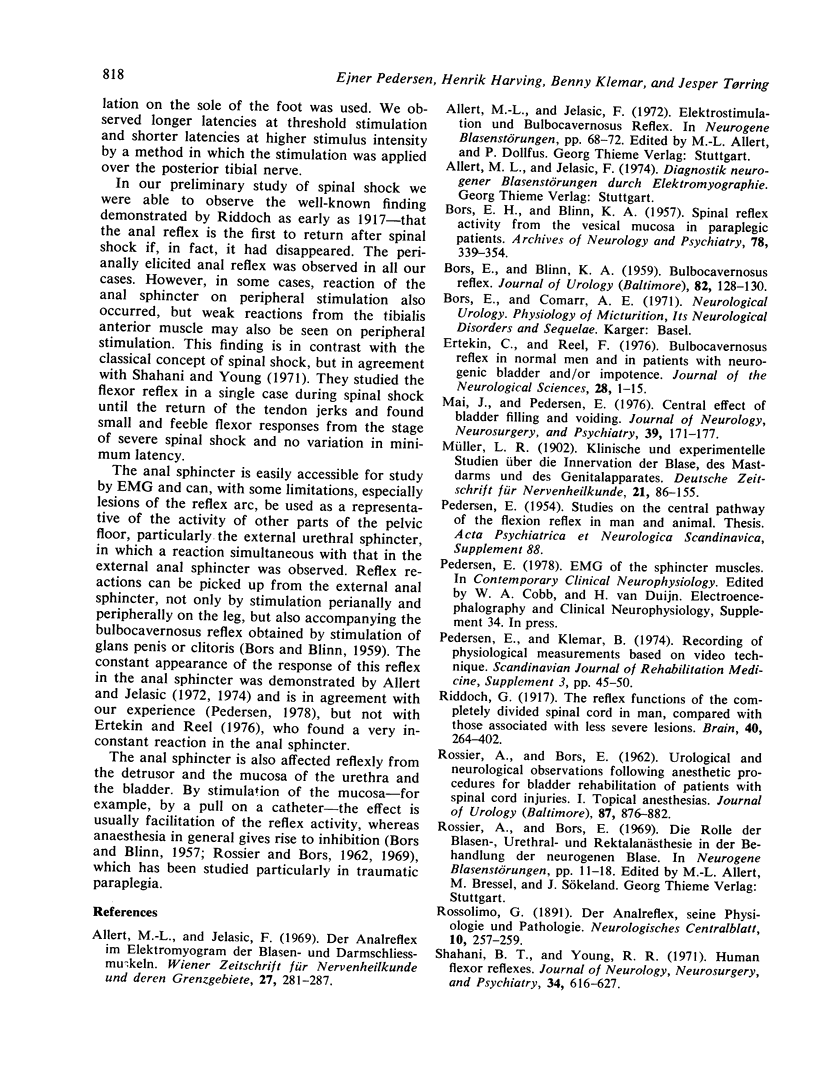
Selected References
These references are in PubMed. This may not be the complete list of references from this article.
- Allert M. L., Jelasic F. Der Analreflex im Elektromyogramm der Blasen- und Darmschliessmuskeln. Wien Z Nervenheilkd Grenzgeb. 1969;27(4):281–287. [PubMed] [Google Scholar]
- BORS E. H., BLINN K. A. Spinal reflex activity from the vesical mucosa in paraplegic patients. AMA Arch Neurol Psychiatry. 1957 Oct;78(4):339–354. doi: 10.1001/archneurpsyc.1957.02330400013002. [DOI] [PubMed] [Google Scholar]
- BORS E., BLINN K. A. Bulbocavernosus reflex. J Urol. 1959 Jul;82(1):128–130. doi: 10.1016/S0022-5347(17)65843-9. [DOI] [PubMed] [Google Scholar]
- Ertekin C., Reel F. Bulbocavernosus reflex in normal men and in patients with neurogenic bladder and/or impotence. J Neurol Sci. 1976 May;28(1):1–15. doi: 10.1016/0022-510x(76)90044-7. [DOI] [PubMed] [Google Scholar]
- Mai J., Pedersen E. Central effect of bladder filling and voiding. J Neurol Neurosurg Psychiatry. 1976 Feb;39(2):171–177. doi: 10.1136/jnnp.39.2.171. [DOI] [PMC free article] [PubMed] [Google Scholar]
- Pedersen E., Klemar B. Recording of physiological measurements based on video technique. Scand J Rehabil Med Suppl. 1974;3:45–50. [PubMed] [Google Scholar]
- ROSSIER A., BORS E. Urological and neurological observations following anesthetic procedures for bladder rehabilitation of patients with spinal cord injuries. I. Topical anesthesias. J Urol. 1962 Jun;87:876–882. doi: 10.1016/S0022-5347(17)65061-4. [DOI] [PubMed] [Google Scholar]
- Shahani B. T., Young R. R. Human flexor reflexes. J Neurol Neurosurg Psychiatry. 1971 Oct;34(5):616–627. doi: 10.1136/jnnp.34.5.616. [DOI] [PMC free article] [PubMed] [Google Scholar]


